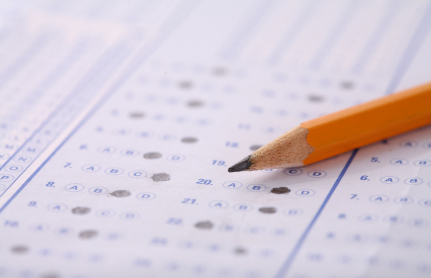There are two phases where a project team can submit documentation for LEED certification: they are named the design phase and construction phase . Here is a quote straight from the USGBC on why: "Project teams will have the option to submit documentation in two separate phases: first for the design phase, and then the […]
Posts Tagged ‘Design Phase’
Energy and Atmosphere 5 – Measurement and Verification
Intent: Provide for the ongoing accountability of building energy consumption over time. Basically, develop a plan to measure and check the building’s energy consumption. Implementation: sidenote: there are 4 options, but for LEED we only look at 2, B and D. Develop and implement a Measurement and Verification (M&V) Plan consistent with: OPTION B (smaller […]
Energy and Atmosphere 4 – Enhanced Refrigerant Management
Intent: Reduce ozone depletion potential (ODP) and global warming potential (GWP) Support early compliance with EPA Montreal Protocol Implmentation: Quick Information: refrigerant comparison CFC (high) HCFC (medium) HFC (low) efficiency of HFC is less than HCFC OPTION 1: do not use ANY refrigerants OPTION 2: use refrigerants and HVAC that minimizes or eliminates emission of […]
Energy and Atmosphere 2 – On Site Renewable Energy
Intent: Increase on-site renewable energy self supply Reduce environmental and economic impacts associated with fossil fuel use Offset building energy costs Implementation: ELIGIBLE TYPES OF RENEWABLE ENERGY: Solar Photo-voltaic Wind Geothermal heating and electric Biomass Bio-gas Low-Impact Hydro Electric NON-ELIGIBLE TYPES OF RENEWABLE ENERGY: Architectural features Passive solar daylighting geo-exchange (ground source heat pumps) green-power […]
Energy and Atmosphere 1 – Optimize Energy Performance
Intent: Achieve increasing levels of energy performance above the baseline in the prerequisite. Reduce environmental and economic impacts associated with building energy usage. Implementation: Methods of optimizing energy performance: Reduce building footprint Reduce demand Provide sensors in: for break rooms class rooms meeting/conference rooms Harvest Energy Building Orientation Window Location Natural Ventilation Improve Efficiency through […]
Innovation and Design Process 1.1 thru 1.4 – Innovation in Design
Intent: To provide design teams and projects opportunities for extra credit points or exceptional performance points for going above and beyond LEED for New Construction Green Building Rating System requirements. Implementation: Substantially exceed a LEED NC performance credit such as energy performance or water efficiency. Apply strategies that demonstrate a comprehensive approach and quantified environment […]
Indoor Environmental Air Quality 8.2 – Daylighting and Views – Views for 90% of Spaces
Intent: Provide connection between indoor and outdoor spaces through introduction of daylight and views into regularly occupied areas of the building. Implementation: Achieve direct line of site to outdoor for occupants in 90% of all regularly occupied areas glazing between 2′-6″ & 7′-6″ Plan View: area within sight lines drawing from perimeter vision glazing Section […]
Indoor Environmental Air Quality 8.1 – Daylighting and Views – Daylight 75% of Spaces
Intent: Provide connection between indoor and outdoor spaces through introduction of daylight and views into regularly occupied areas of the building. Implementation: OPTION 1 – GLAZING FACTOR CALCULATION achieve min. 2% glazing factor in minimum of 75% of regularly occupied areas. OPTION 2 – DAYLIGHT SIMULATION MODEL through computer simulation, demonstrate min. daylight illumination level […]
Indoor Environmental Air Quality 7.2 – Thermal Comfort – Verification
Intent: Assessment of building’s thermal comfort over time. Implementation: Survey within 6-18 months after occupancy anonymous responses of overall satisfaction of thermal performance If 20% or more of building occupants dissatisfied, develop a plan for corrective action Plan should be in accordance with ASHRAE 55-2004 Code: ASHRAE 55-2004: Thermal Comfort Conditions for Human Occupancy Submittal […]
Indoor Environmental Air Quality 7.1 – Thermal Comfort – Design
Intent: Provide a comfortable thermal environment supporting productivity and well-being of building occupants. Implementation: Design HVAC systems and Building Envelope per ASHRAE 55-2004. Evaluate air temp. radiant temp, air speed, relative humidity Coordinate with EQ P1. EQ 1, & EQ 2. Code: ASHRAE 55-2004: Thermal Comfort Conditions for Human Occupancy Submittal Phase: design Indoor Environmental […]






